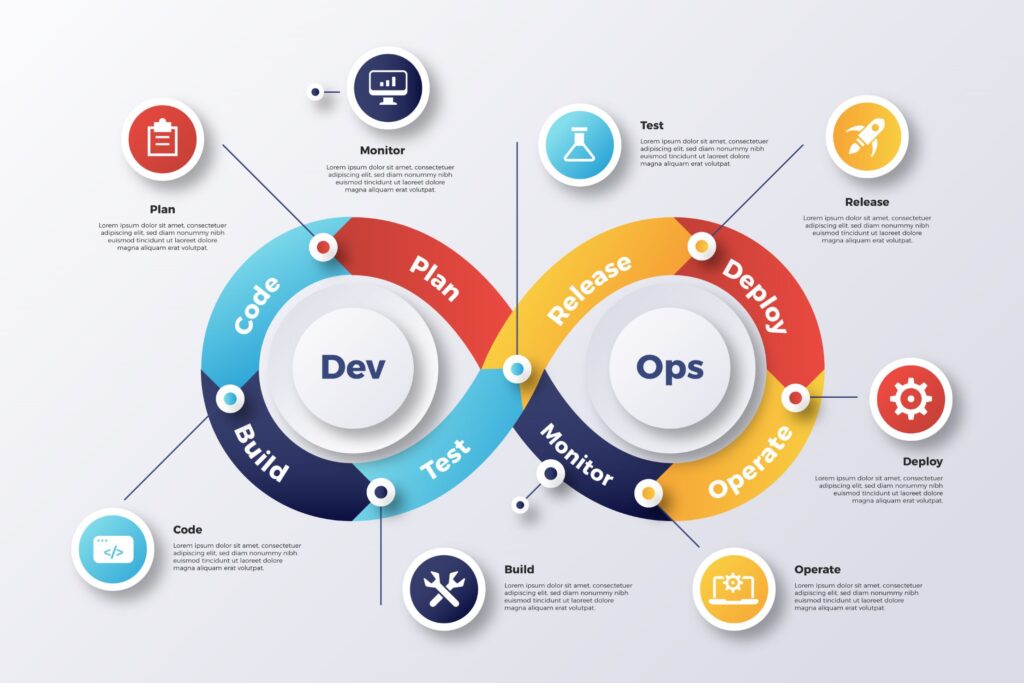Table of Contents
Implementation strategies of DevOps
In today’s fast-paced technological landscape, organizations strive to deliver high-quality software at an accelerated pace. DevOps, an amalgamation of development and operations, offers a transformative approach to achieve seamless collaboration and continuous integration and delivery. By fostering efficient communication, automation, and shared responsibility, DevOps enables organizations to streamline their software development and deployment processes. This article explores the key principles, benefits, and implementation strategies of DevOps, highlighting its significance in modern software development.
Understanding DevOps
Definition of DevOps
DevOps is a set of practices that combines development (Dev) and operations (Ops) to create a culture of collaboration, communication, and automation within an organization’s software development lifecycle.
Core Principles of DevOps
- Collaboration and Communication: DevOps promotes cross-functional teams that encourage collaboration and communication between developers, operations personnel, and other stakeholders.
- Automation: Automated processes facilitate continuous integration, testing, and deployment, reducing errors and ensuring consistency.
- Continuous Integration and Deployment: Continuous integration involves regularly merging code changes, while continuous deployment automates the release of software updates into production.
Benefits of DevOps
Accelerated Software Delivery
DevOps enables organizations to deliver software updates more frequently, reducing time-to-market and increasing customer satisfaction. Continuous integration and deployment practices minimize bottlenecks and facilitate faster feedback loops.
Improved Collaboration and Efficiency
By breaking down silos and fostering collaboration between development and operations teams, DevOps encourages knowledge sharing, reduces handoffs, and improves overall efficiency. Increased transparency and shared responsibility contribute to better problem-solving and innovation.
Enhanced Quality and Reliability
DevOps emphasizes automated testing, code reviews, and monitoring, leading to improved software quality and reliability. Continuous integration and deployment practices ensure that potential issues are identified early, reducing the likelihood of critical failures in production.
Scalability and Flexibility
DevOps practices enable organizations to scale their infrastructure and software systems more effectively. Automated provisioning and configuration management ensure that resources can be quickly provisioned or modified to meet changing demands.
Implementing DevOps
Establishing a DevOps Culture
a. Foster Collaboration: Encourage communication and collaboration between development, operations, and other relevant teams by establishing shared goals and regular interactions.
b. Embrace Automation: Identify and automate repetitive tasks, such as code testing, builds, and deployments, using tools like Jenkins, Docker, and Ansible.
c. Encourage Continuous Learning: Promote a learning culture where team members are encouraged to acquire new skills, experiment with new tools and technologies, and share their knowledge.
Adopting Agile Practices
Agile methodologies, such as Scrum or Kanban, complement DevOps by promoting iterative development, short feedback loops, and incremental delivery. Embrace Agile principles to enhance collaboration and responsiveness within teams.
Leveraging DevOps Tools
a. Source Control and Versioning: Utilize tools like Git or SVN to manage code repositories, enabling version control and collaboration among developers.
b. Continuous Integration and Deployment: Implement CI/CD tools such as Jenkins, GitLab CI, or CircleCI to automate build, test, and deployment processes.
c. Infrastructure as Code: Use tools like Terraform or Ansible to provision and manage infrastructure resources programmatically, ensuring consistent and reproducible environments.
Overcoming Challenges
Cultural Resistance
Introducing DevOps may face resistance from individuals and teams accustomed to traditional development or operations processes. Establishing open communication channels, emphasizing the benefits, and providing adequate training can help overcome resistance.
Tool Selection and Integration
With a plethora of DevOps tools available, organizations must carefully evaluate and select tools that align with their specific requirements. Ensuring seamless integration between different tools is crucial to achieve a smooth workflow.
Security and Compliance
DevOps practices should incorporate security measures throughout the software development lifecycle. Implementing secure coding practices, vulnerability scanning, and automated security testing helps mitigate risks and maintain compliance.
DevOps revolutionizes software development and deployment by fostering collaboration, automation, and continuous delivery. By aligning development and operations teams, organizations can streamline their processes, improve software quality, and accelerate time-to-market. Adopting DevOps principles and leveraging appropriate tools empower organizations to stay competitive in the ever-evolving digital landscape, enabling them to deliver robust and innovative software solutions.


